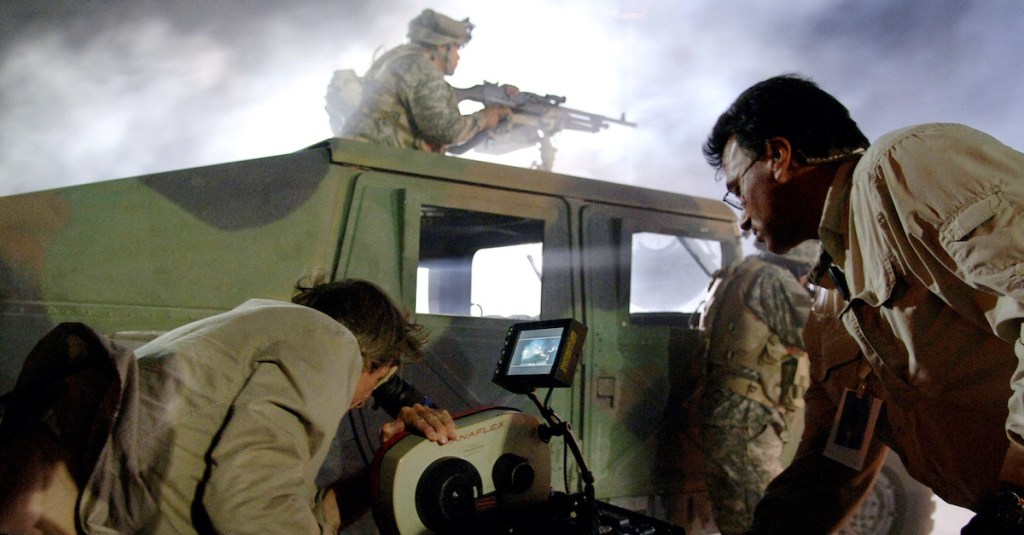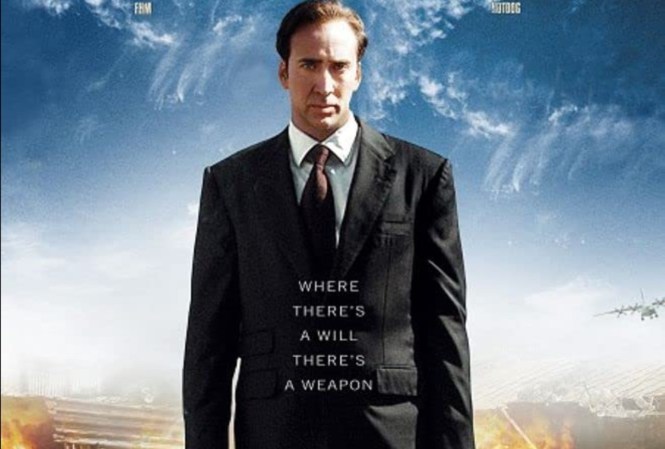The first war film ever, D.W. Griffith’s silent picture, “The Fugitive” was made over a century ago. The intensity and drama of war films caught on quickly, and the best ones have been huge hits at the box office. As thrilling as they are, even movies portrayed as historically accurate rarely get the details of war just right. We can’t blame them entirely; war movies would be a lot less thrilling and suspenseful if they skipped all the theatrics. Here’s the scoop about what movie directors get wrong, and what war is really like.
The sound effects
In the movies, battles start with the sound of gunfire, before bullets come flying past. That’s not a thing. Rifles are actually supersonic, so the bullets arrive before the sound does. Soldiers do hear a whistling sound as the bullets pass by, but the actual sound of the gun firing arrives after the fact.
The actual sounds are pretty far off, too. The sound of mortars firing is something like the sound of a tennis ball launcher in most war films, but it’s infinitely louder in real life. The blast is so powerful it can be felt, shaking the ground and causing intense vibrations. That’s one reason veterans are prone to tinnitus, or ringing in the ears. It’s THAT loud.
The uniforms
Some movies do a better job of this than others, but more often than not, a detail or two of the dress code is missed. Military dress uniforms are incredibly precise, so anyone other than a veteran would be hard-pressed to get every nuance right. Untucked lapels on a Marine service alpha uniform is a small one, but some movies dress actors in the wrong uniforms entirely. Come on, directors. You can do better.

How crowded battlefields are
Ever seen a movie with soldiers all in one place, hashing it out in close combat? That’s rarely how it works. No one arranges a battle on a conveniently located open field where everyone meets up to shoot each other, with helicopters and planes joining in at random. In a real war, dispersing troops is critical. Distance is kept between military personnel to prevent the enemy from wiping out a massive chunk of your forces all at once.
How aerial attacks work
Most movies make it seem like planes swoop down nearly to the ground before attacking. It’s dramatic for sure, but it’s not realistic. Low-level flying is only used in specific scenarios. For the most part, planes fly as high as possible to maximize safety and ensure adequate maneuverability. More space, more chances to get out of there if necessary. Low-level flying does happen, but generally, pilots try to drop to low altitudes as briefly as possible.
Camouflage
While movie soldiers do wear camo, they rarely use it well. When used correctly, camouflage can make soldiers and even vehicles seemingly vanish. The movies just skip that part because it’s a lot less fun to watch a battlefield with nothing but sand and a few tumbleweeds on it.
Confusion
In movies, the characters always know what’s going on. The details of the battle are clear. The enemy starts shooting, and the hero instantly knows where the gunfire is coming from, how large the enemy forces are, and how to retaliate. In a real battle, it’s much more confusing. No one is familiar with the area, so someone is studying a map while someone else is trying to figure out what’s happening and what to do next. It’s confusing! Radios aren’t usually as clear as they are in the movies, either. It might take four tries to hear the order coming in.

How much shooting actually occurs
A shot rings out in the night. There’s a moment of stillness, and then utter chaos breaks loose. Shots fly everywhere. It’s a gunfire free for all. There’s a cut and dry good side and a bad side, and they shoot at each other with abandon until one (usually the good side) reigns victorious.
Real battles are much more calculated. There’s rarely indiscriminate shooting. Most soldiers never fire their weapons, and if they do it’s usually under the direction of a senior ranking officer. Everyone’s heard the phrase “all is fair in love and war”, but that’s not quite the case. War has rules. You can’t just shoot whomever you want.
Endless ammo
Ammo doesn’t last forever, so automatic fire doesn’t happen nearly as often as the movies would lead you to believe. Military rifles are more than capable of the task, but automatic fire is rarely used in real battles. That would be both expensive and unnecessary.
How bad it really gets
Movies hype up the drama but tone down the horror. They do show some blood, injuries and casualties, but they keep the gore in check to avoid completely scarring the audience. People go to the movies to be entertained, not legitimately traumatized. Real war can be much more horrific. The gore, suffering, and emotional trauma exceeds what the movie industry dares to sell.
The darkly peaceful aftermath
It’s a classic scene. The battle is over. The field is quiet and still, and dead men lie silently amongst weapons and shredded, muddied flags. That would be a more peaceful end than what really happens. The chaos isn’t over after the battle is won. The wounded are in severe pain as medics rush to treat them. Soldiers scramble to collect weapons and usable ammunition. The scattered flags? Not a thing. The victorious would never leave their own flags behind, and enemy flags are often kept as trophies.
That said, while the reality of war is pretty dark, let’s remember that many members of our armed forces never fight in combat, never fire their weapon and return home safely. To end on a lighter, helpful note, here’s a quick pro-tip: You know all those overpriced phone cases that claim to offer “military-grade protection?” Much like the glamourous battle scenes from Hollywood, it’s not real. There’s no official military-grade certification. It’s just a well-disguised excuse to jack up the price. But you won’t fall for it, because you know the real story.

















